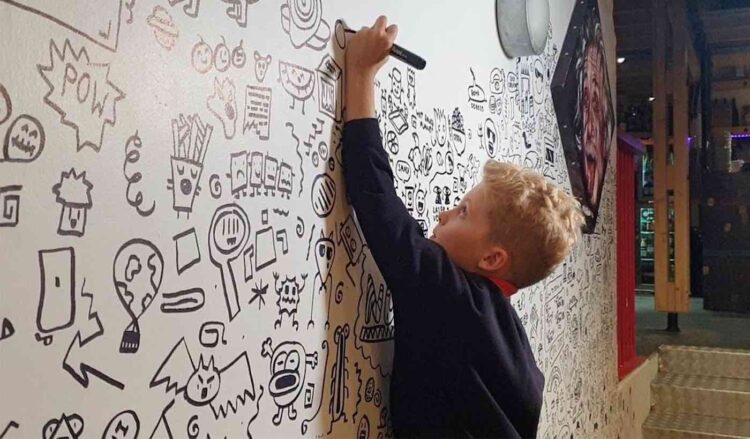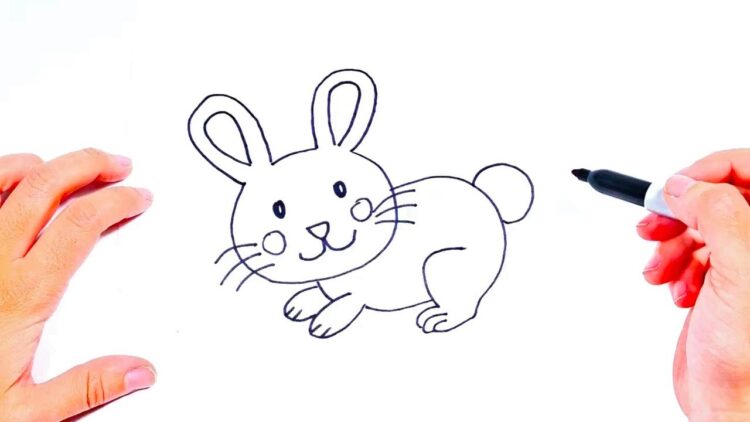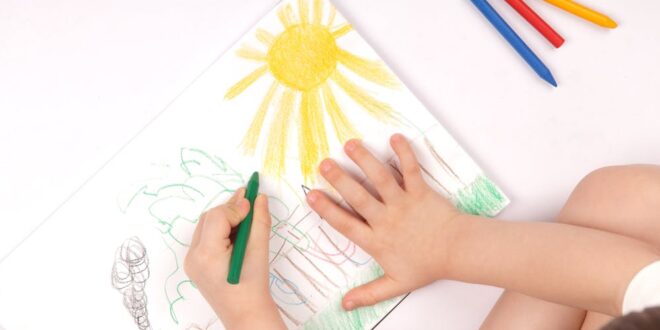Every kid loves drawing and coloring; it’s an activity that defines childhoods. But coloring and drawing are not only a fun way to keep your kids busy, but it can also be a way for them to express themselves.
Everyone knows that a child’s imagination is endless. It has been psychologically proven that children have the wildest imaginations and thoughts, and can even solve riddles pretty darn good.
Children, when younger, are drawn to beautiful colors and objects that seem playful to them. Other things that a child draws are shapes, books, and animals.
But there are two activities that children love to do when they are starting to learn and figure things out. Those two activities are coloring and drawing.
Whenever a kid draws something they deem to be good-looking, it gives them a sense of accomplishment and a sense of pride. A clear example of this would be the fact that your kid will show you what he/she has drawn; therefore you must showcase it on the refrigerator.
There are numerous benefits as to why you should let your children express themselves through coloring and drawing. These two activities also hold educational value. And we are going to talk about all of that in our article.
1. Improving Motor Skills

As drawing and coloring are two unique activities that help define a child who he/she is, it’s best that we mention the fact that these activities also help develop your child’s motor skills.
Motor skills are essentially the movement in the hand area. This includes everything from wrists down to their fingers, and it is something that must be learned at an early age.
Our children develop fine motor skills through the activities of drawing and coloring since these activities include hand, finger, and wrist movement. With fine motor skills, your kid will develop the sense to perfectly define shapes, curves, and draw in directions.
This can only be achieved through practicing, so it is very important for our little ones to learn how to hold and draw with a pen or a crayon to perform these movements.
2. Improves Synchronization and Cognitive Abilities
One way for a kid to develop cognitive abilities is to look at what he/she is drawing. This is a huge benefit when it comes to performing these two activities as it does far more than simply expressing.
By looking at what your kid is drawing or coloring, he/she is developing or improving existing vision and motor skills. But a very important aspect is that it helps synchronize both skills.
These activities will help them to draw and color the things they see in their minds, which ultimately is a huge benefit later in life.
3. Improves Intuitive Abilities

Yet another educational benefit that comes with drawing and coloring is the fact that it improves a child’s ability to store moments into their memory, as well as, thinking and other intuitive abilities.
But there is no good of storing moments or thinking if it is not repeated or improved through time. One way to do exactly that is to perform these activities.
If we take, let’ say, coloring for an example, then we can safely say that coloring objects based on their real color help us get into this repetitive mode and that ultimately helps us remember and reproduce those results. Coloring is an excellent way to develop the ability to think by imagining different scenarios where that same color can be applied. Coloring is also good for your mental health, as well as your education, as it keeps your mind sharp at all times.
The best way to develop an open mind, develop thinking skills, and various other intuitive abilities are to use coloring books. If you’re looking for the best coloring books that will allow your child to develop all the necessary educational skills needed at an early age, then make sure to visit colorcrush.me
4. Improves the Ability to Observe
No one can possibly learn how to draw or color without the ability to observe their surroundings. Apart from having strong observational skills, a good memory is also needed as a child needs to store all that observational information.
We mentioned that kids love to draw shapes, figures, etc, and use various colors to do it. By doing all of this, our little ones start to learn the difference between those shapes and sizes and start differentiating one from another. By drawing circles and squares, they will soon understand the difference between these two particular shapes.
But they cannot do it if they don’t observe the difference. For example, drawing helps them understand that a circle is round, like a ball. A square, on the other hand, teaches them that the object in question has right angles, like a piece of paper. They learn these things by observing them. By observing these objects they will start drawing them and coloring them.
They will start observing their shape and their color. And ultimately, this helps them better understand what the particular object is, what it can do, what is the object meant for, etc.
5. They Learn Through the Act of Doing

When our children draw or color, they are expressing themselves. When in this situation, you might feel the need to guide them in a certain direction. However, this could not be a bigger mistake as you are effectively suppressing their expression and creativity.
When on this unique educational path towards knowledge and understanding of how things interact, how things feel, and how they look, our kids must be left to themselves and express through a unique way that only they understand.
While there is no harm in assisting them through their drawings and colorings, you mustn’t do it to a great extent. You can certainly ask them to draw two objects, one smaller and one bigger, and talk with them about the difference in both.
And while coloring and drawing certainly help our children improve their motor skills, there are far more benefits that aid them throughout the educational journey.
 Hi Boox Popular Magazine 2024
Hi Boox Popular Magazine 2024



